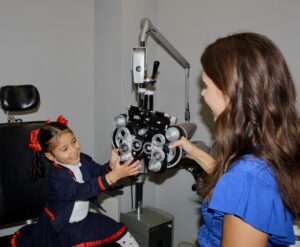Myopia Management
Nearsightedness, medically known as myopia, refers to vision that is good at close range but not at a distance. Nearsightedness occurs when the eyeball is longer than normal, as measured from front to back.
Myopia typically starts to develop in childhood and often progresses until about age 20. Slowing the progression is important because it may reduce the risk of developing serious eye conditions later in life such as cataracts, glaucoma, retinal detachment, and blindness.
Our office provides a myopia management program that includes the most recent innovations in slowing down myopic progression. We focus on creating an individualized treatment plan that works best for your child’s needs.
Multifocal contacts lenses
Multifocal contact lenses are special contacts that have different powers in different zones of the lens. Researchers and eye doctors have found that multifocal soft contact lenses are also effective tools for myopia control in children. Some research demonstrates that using soft multifocal lenses in children caused about a 50% reduction in progression.
Atropine eye drops
Low dose atropine emerged as an effective treatment for myopia management in the early 2000’s. Patients put drops in every evening in addition to wearing glasses and contacts. Low-dose atropine helps to reduce the progression of myopia in children about 40%.
Orthokeratology
Orthokeratology is a specially designed contact lens that reshapes the curvature of your child’s cornea. Ortho-K contact lenses are only worn during sleep at night. During the day, lenses are removed and vision is fully corrected with no glasses or daytime contact lenses. Orthokeratology reduces myopic progression by about 50%.
Essilor Stellest lens
The Essilor Stellest lens is the only FDA approved lens to slow down myopic progression by about 70%. The lenses work by creating peripheral blur, while correcting central vision, which is a similar mechanism as contact lens methods.
